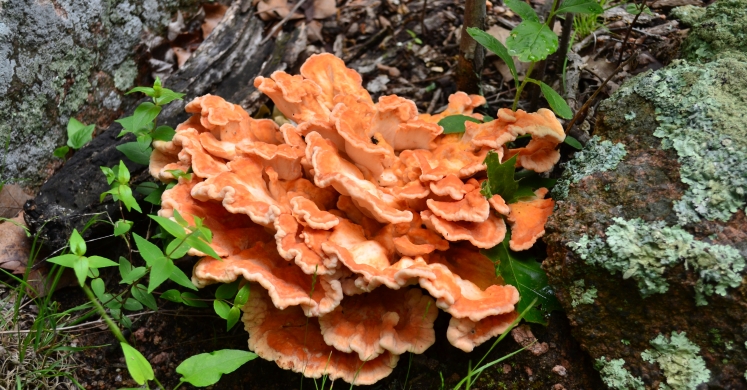Blog

#bioPGH Blog: Mushroom Mania
 A resource of Biophilia: Pittsburgh, #bioPGH is a weekly blog and social media series that aims to encourage both children and adults to reconnect with nature and enjoy what each of our distinctive seasons has to offer.
A resource of Biophilia: Pittsburgh, #bioPGH is a weekly blog and social media series that aims to encourage both children and adults to reconnect with nature and enjoy what each of our distinctive seasons has to offer.
What gets us so excited, we exclaim “Oh my-celia!”? Well, that would be mushrooms, of course! Autumn is the most exciting time of year for mushroom hunting, and whether you’re excited about the biology, photography, or culinary side of fungi (with expert guidance), this time of year has something for every mushroom enthusiast. So if you can’t get enough of enoki, hop over to a toadstool and tune in those jelly ears as we dive into some mushroom mania!
We’ve all seen fungi in some form or another, but there is quite a bit of variation across this kingdom of life. Some fungi may look like plants, others look like slime or dust, and others may glow in the dark! Some fungi grow on the ground, others form relationships with algae and cyanobacteria, and some…grow on your feet. The key characteristic that makes a fungus a fungus is the presence of a tough material called chitin making up the organisms’ cell walls. This material adds rigidity and protection to the cells that make up various fungi.
If we zoom in on a mushroom in a forest, though, we are typically seeing only the temporary fruiting body of a fungus; the rest of the organism lies underground or in rotting wood. This “hidden” portion of a fungus is a network of small filaments (threads) called mycelia (singular: mycelium). Though they may loosely resemble a thin webbing of plant roots, they have quite a different anatomy and function. Mycelia produce the fruiting bodies of fungi, what we often think of as mushrooms, like puffballs, but they also break down organic material and absorb the nutrients.
This function of mycelia hints at a major job of fungi in ecosystems: decomposition. Fungi break down organic matter — things that used to be alive. This is a key part of nutrient cycling, the process which allows other organisms to take advantage of the released nutrients from dead plant or animal material. Fungi accomplish this by producing enzymes, a special kind of protein that can break down some tough materials. (Have you ever put meat tenderizer on a tough steak? That is an enzyme changing the composition of some of the tough protein in the meat.)
Indeed, beyond decomposition, fungi are also important in other ways.
“Mycorrhizal fungi play an essential role in our ecosystems, forming co-beneficial relationships with plants through their root systems to help them absorb nutrients and even communicate with our plants,” says Gabe Tilove, Phipps’ director of Adult Education and Community Outreach.
And they are important beyond their ecological function, Gabe notes: “Mushrooms are an important part of human culture, too — they provide food, medicine, and material to make art.”
I guess the morel of the story here is that mushrooms are amazing!
Connecting to the Outdoors Tip: We love mushrooms so much that Phipps created a whole series of programs this fall on learning more about our fungal friends. Check out what speaks to you!
Whimsical Watercolor Mushrooms | Rosalie Haizlett | Thurs., Nov. 2 | 6 – 7:30 p.m.
Making Masterpieces from Mushrooms Series | Britt from Flannel Roots Farm
- Making Masterpieces from Mushrooms | Paper and Ink: Inkcaps | Britt from Flannel Roots Farm | Thurs., Nov. 2 | 6:30 – 7:30 p.m.
- Making Masterpieces from Mushrooms | Watercolor and Paint | Britt from Flannel Roots Farm | Thurs., Nov. 9 | 6:30 – 8 p.m.
- Making Masterpieces from Mushrooms | Mushroom Leather: Amadou | Britt from Flannel Roots Farm | Thurs., Nov. 16 | 6:30 – 8 p.m.
Creating a Mushroom Garden | Luke Mitchell | Sat., Nov. 4 | 2 – 4 p.m.
Images: Cover, Wikimedia user Kbh3rd, CC-BY-3.0; header, Pexels public domain

